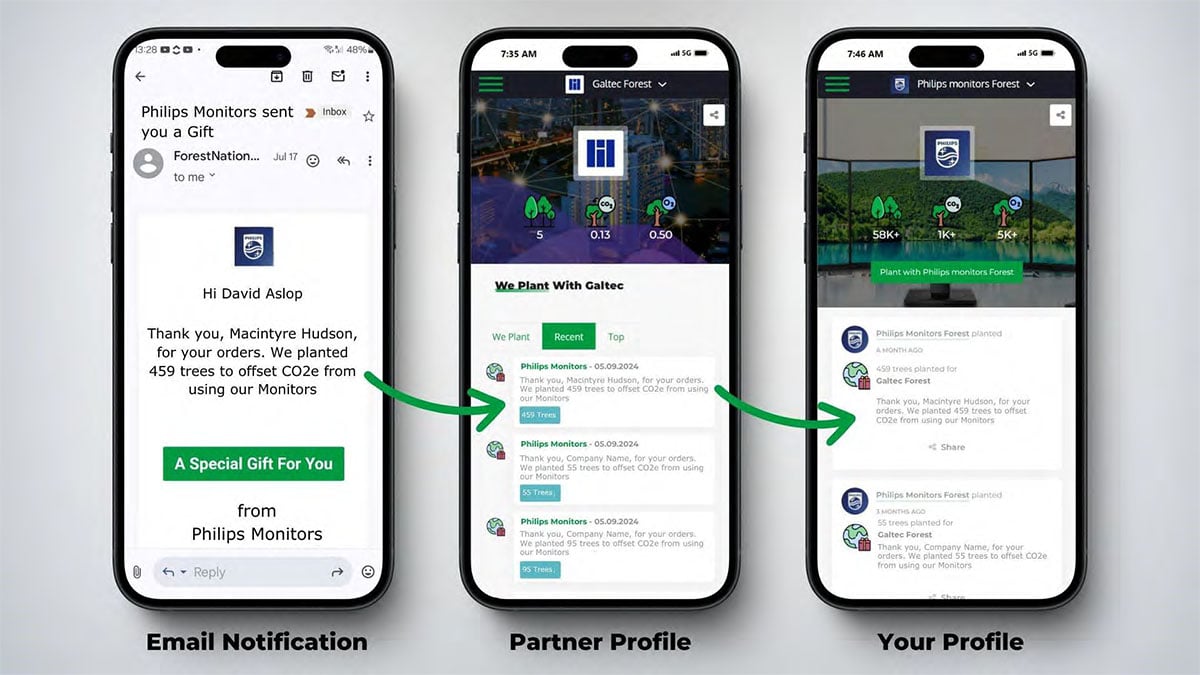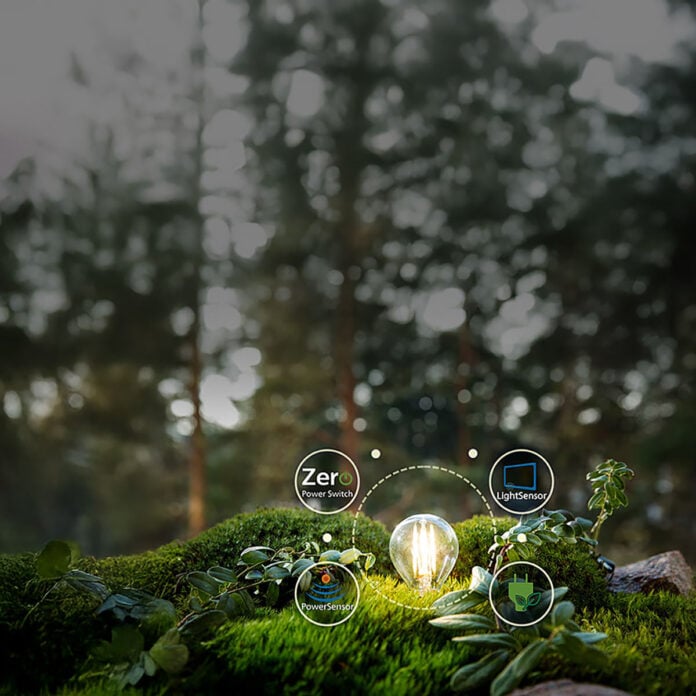The following text is provided by Philips and published verbatim.
In the push for corporate sustainability, promises are plentiful. We hear about “green initiatives” and “eco-friendly roadmaps,” but the real question is: where is the proof? When a company claims its products are sustainable, can they show you the impact in a way that’s tangible, measurable, and real?
Philips Monitors is answering that question not with words, but with trees. Through a ground-breaking partnership with ForestNation, the company has moved beyond simple energy ratings to create a program with undeniable, real-world impact. This isn’t just about making eco-friendly products; it’s about turning the act of purchasing technology into a powerful force for reforestation. The results of this initiative, demonstrated by its adoption by major UK corporations, speak for themselves.
The Case Study: From Tenders to Trees
The core of this initiative is the Philips Monitors Forest, a living testament to the program’s success. The concept is simple yet powerful: trees are planted as a gift to the planet based on the first-year energy savings of select Philips displays. This “Power Planting Program” has become a key differentiator, helping to secure multi-million-pound contracts and proving that sustainability can be a deal-winning asset.
Leading organisations are already taking part. In the first quarter of 2025 alone, clients including Network Rail, Birmingham NHS Trust, Accenture, Kellanova/Kellogg, and AMD purchased a combined 6,550 energy-efficient Philips monitors. This single-quarter procurement directly resulted in 8,218 trees being planted to offset the monitors’ first-year carbon footprint.
This isn’t a vague pledge. It’s a verified, client-driven success story that turns every purchase order into a branch of a growing forest.
How a Monitor Becomes a Tree
So, how does a monitor purchase translate directly into a specific number of trees? The process is transparent and based on certified data.

Let’s use the popular Philips 34B1U5600CH monitor as an example—a model chosen by Network Rail, Accenture, and Kellanova.
- Calculate CO2 Emissions: Using the Philips Monitors Energy Calculator, the first-year CO2 emission for one 34B1U5600CH display is calculated to be 35.65 kg.
- Scale the Impact: For a corporate order of 100 monitors, the total CO2 footprint is 3.57 metric tonnes.
- Plant the Offset: To offset this specific amount of CO2, Philips and ForestNation plant 142.6 trees. This works out to a consistent rate of approximately 40 trees for every tonnes of CO2 emitted.
This clear, data-driven model allows companies to see the exact, positive environmental return on their investment. When Birmingham NHS Trust purchased 1,500 units of the ultra-efficient 241B8QJEB monitor, they could be certain that their choice led to 897 trees being planted.
Joining a Thriving Ecosystem
The impact of these individual procurement decisions is cumulative and vast. The Philips Monitors Forest, nurtured by these partnerships, now consists of over 58,699 planted trees. Together, this forest is already generating an estimated 6,025 tonnes of oxygen every year, creating a legacy that extends far beyond the lifecycle of the products themselves.
This tangible success is built on a foundation of truly sustainable technology. Features like the PowerSensor, which can cut energy costs by up to 80% by detecting user presence, and the LightSensor, which adjusts brightness to ambient light, are what make these energy savings possible. Combined with the use of up to 85% post-consumer recycled plastics and TCO certifications, the hardware itself is engineered to minimize its environmental footprint from day one. Philips is committed to using sustainable, eco-friendly materials across its monitor range. Beyond recycled plastics, the company employs 100% recyclable packaging, adheres to Restriction of Hazardous Substances regulations, uses Low Halogen design to minimise environmental impact, and maintains a Mercury-free eco-friendly design philosophy throughout its product development.

In a competitive market, Philips has proven that sustainability is more than a line item in an annual report; it’s a powerful tool for building loyalty and winning deals. As one UK sales lead noted, the ForestNation initiative was vital in securing contracts amounting to £2 million, demonstrating its commercial and ecological value.
The choice businesses are facing today is no longer just about which product performs best, but which purchase aligns with their values and contributes to a better world. With Philips Monitors, the choice is clear. You aren’t just buying a monitor; you are planting a tree, joining a forest, and investing in a greener future.
Discover the impact your next technology upgrade could have. Visit the Philips Monitor Energy Calculator to see how you can join the movement.


